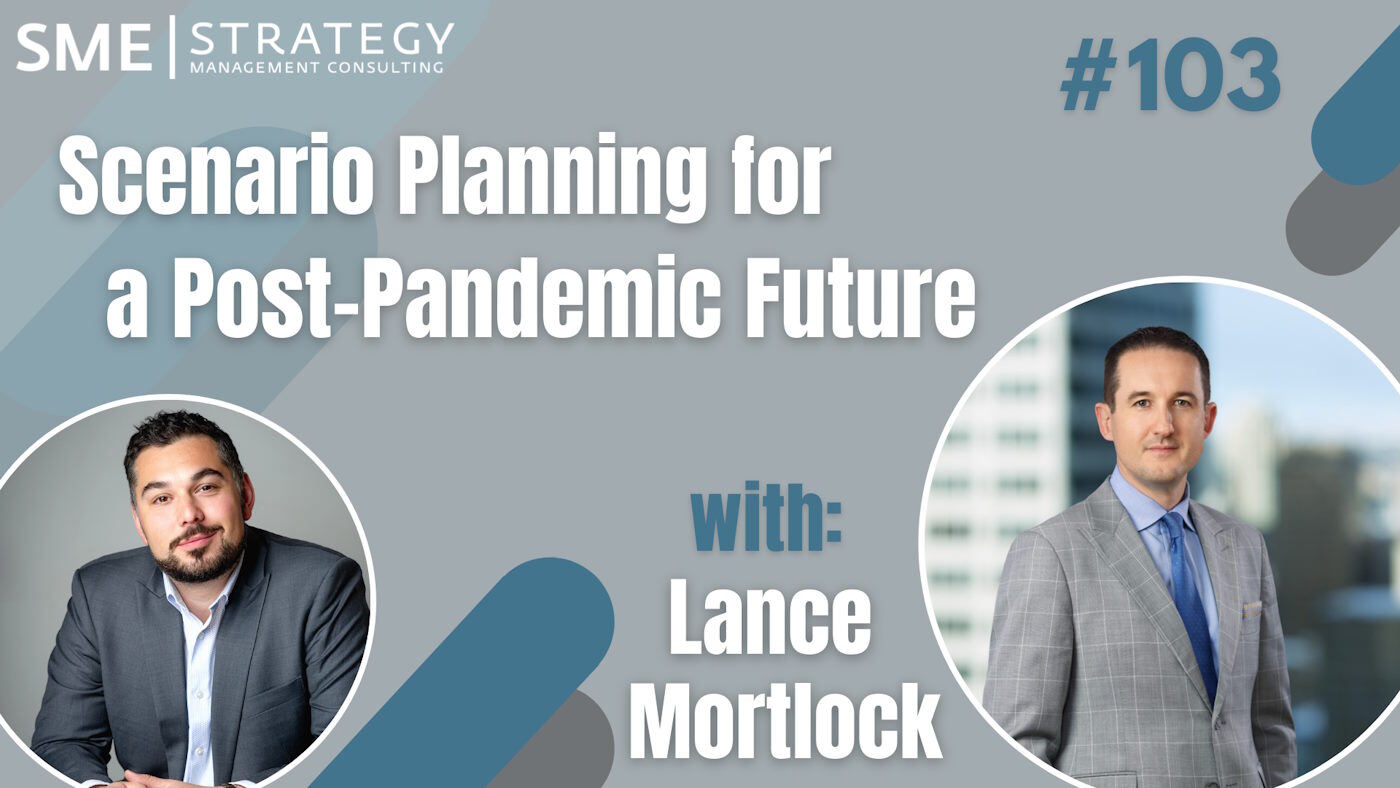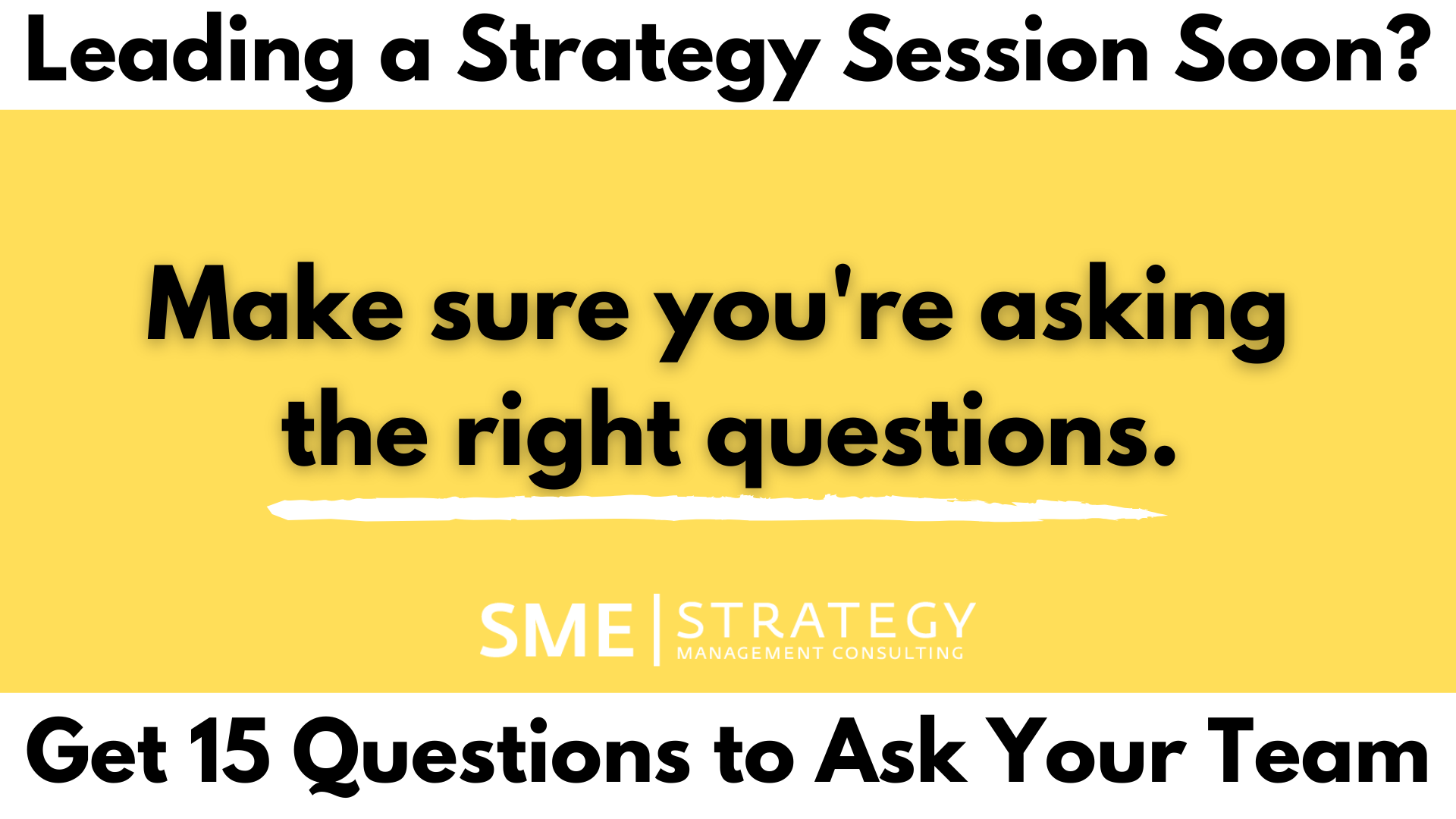Scenario Planning for a Post Pandemic Future w/Lance Mortlock from EY Ep#103

On this episode of the Strategy & Leadership Podcast, we're excited to welcome Lance Mortlock. Lance is a Senior Strategy Partner at EY, and a Canadian Oil & Gas Industry leader. He's also a visiting professor at the University of Calgary - Haskayne School of Business, and the author of Disaster Proof: Scenario Planning for a Post Pandemic Future.
On this episode, Lance joins us to discuss the need for scenario planning, the problems he solves for companies, how to approach uncertainty, how universities are teaching strategy, and much more.
Having your strategic planning session soon? Make sure you ask your team these 15 questions first:
Here's a breakdown of our conversation:
-
The problems he solves on a daily basis
Lance is pulled into all kinds of organizations in various sectors including mining, energy, public sector, infrastructure, and oil & gas. One of the main problems he's been solving lately is cost reduction. And many organizations approach him thinking about the future - they want someone to come in and do a study of the market, and then use that research as a basis for their strategy. Ultimately, Lance solves problems for organizations when there's a degree of change occurring.
-
Why you should think of the future when building your strategy
Lance explains that organizations need to look at the future now more than ever because of the higher levels of volatility. He uses a term to describe the times we're living in: VUCA (volatility, uncertainty, complexity, ambiguity). Another reason to consider the future is to manage the booms and busts - something that is more prevalent in some industries more than others. Ultimately, Lance says that considering the future is not about forecasting or predicting, but about painting a picture of a handful of scenarios that could happen.
-
The 6-step scenario planning process
-
Define the scope of what you're trying to solve for and identify your stakeholders.
-
Explore the environment and do some research. What are the important trends, uncertainties, and risks?
-
What does all the research mean? Prioritize certain trends and uncertainties (this can be done in 3 days or 3 months - it's up to you and how much work you want to put in).
-
Build some scenarios based on your research.
-
Confirm the scenarios and stress test them. Test your strategy against the scenarios (do your investments and initiatives hold water?).
-
Monitor the signals and execute on the strategy. Signals could include COVID cases, the Consumer Price Index, interest rates, investments dollars, or others.
-
-
How universities are teaching strategy
As a visiting professor, Lance says that the university education is much better than it was when he was a student. When he was at school, the learning was much more based on books. Now, students have the chance to do case competitions, work on real world problems, use practical tools and work with real world companies as part of their schooling. Many schools are in contact with local small businesses, and have students partner with the businesses to try and solve real world business problems with real consequences.
Learn how a strategic planning consultant can work with your leadership team to create alignment, buy-in and a common vision of success:
Or learn how to create your own strategic plan from scratch with our video course:
To get a hold of Lance, connect with him on LinkedIn, and be sure to check out his book, Disaster Proof: Scenario Planning for a Post-Pandemic Future.





